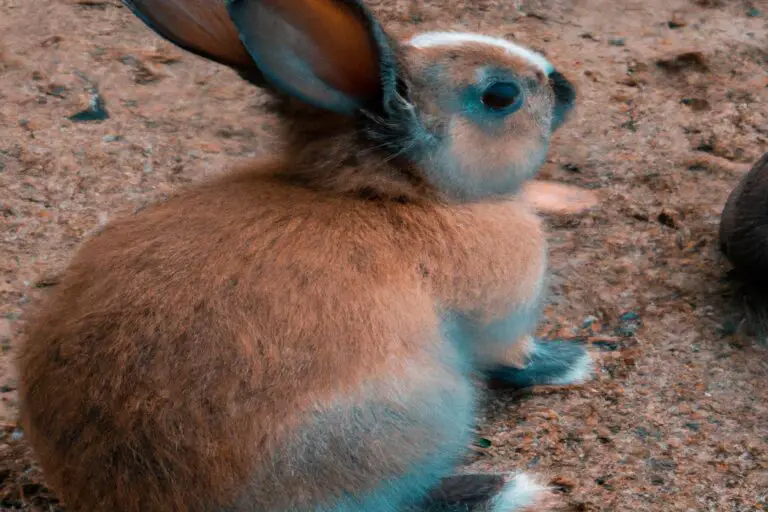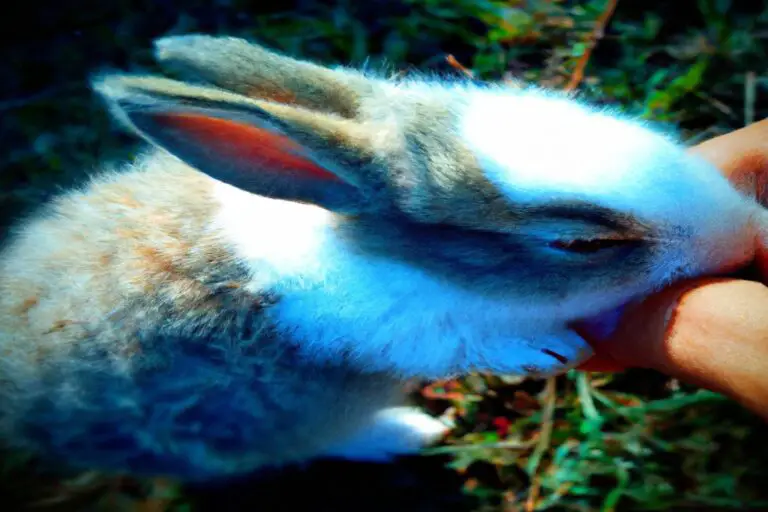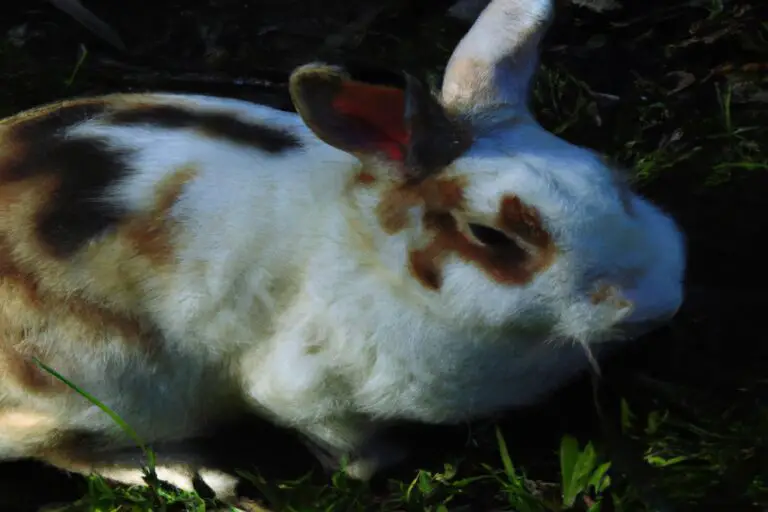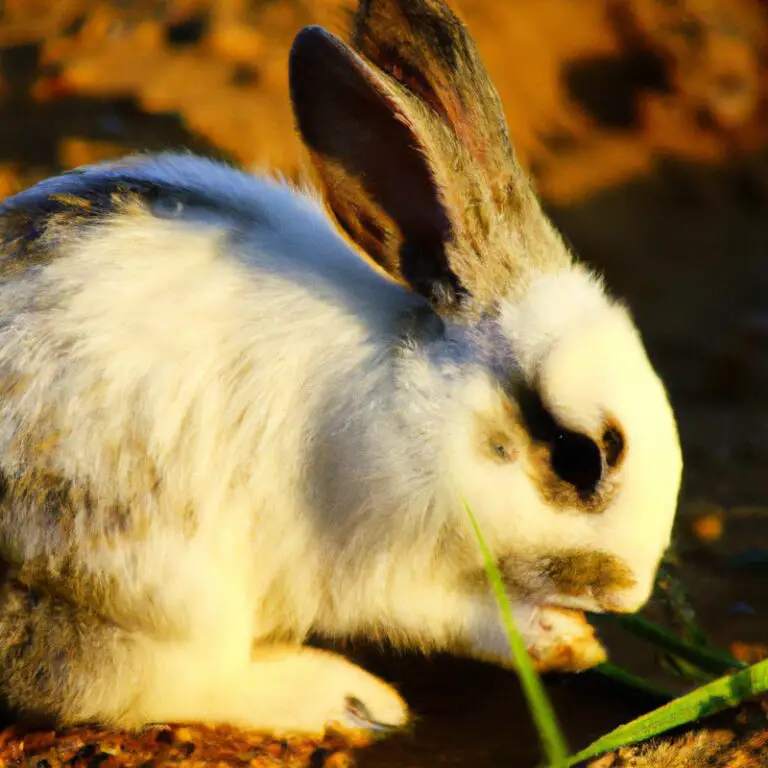Creating a Safe And Enriching Environment For Your Pet Rabbit
Key Takeaways:
- Provide a spacious enclosure with hiding places and areas for exercise.
- Offer a balanced diet rich in hay, fresh vegetables, and limited pellets.
- Ensure regular veterinary check-ups and vaccinations to maintain your rabbit’s health.
- Provide mental stimulation through toys, tunnels, and interaction with you.
Hey there, rabbit lovers! Are you ready to hop into the world of creating a safe and enriching environment for your furry friend? Whether you’re a seasoned rabbit owner or thinking of welcoming one into your family, this blog is your ultimate guide to keeping your pet rabbit happy and healthy.
From housing and nutrition to exercise and socialization, we’ll cover it all.
Get ready to dive into the wonderful world of rabbit care, where we’ll share expert tips, reliable information, and answer all your burning questions. Let’s ensure your bunny’s home is a safe haven where they can thrive and bounce with joy!
| Aspect | Safety Measures | Enrichment Activities |
|---|---|---|
Housing and Enclosures for Pet Rabbits
To create a safe and enriching environment for your pet rabbit, there are a few things you should consider when choosing their enclosure and setting up their living space.
This includes selecting the right size and type of enclosure, rabbit-proofing the area, and providing a comfortable sleeping area.
Choosing the right size and type of enclosure
When choosing an enclosure for your pet rabbit, it’s important to consider the right size and type. Firstly, the size of the enclosure should allow your rabbit to move around comfortably, stretch out, and hop.
The enclosure should also provide enough space for a litter box, food and water bowls, and toys.
Secondly, consider the type of enclosure that suits your rabbit’s needs. A spacious wire or mesh cage with a solid bottom is ideal, as it allows for good ventilation and prevents your rabbit from escaping.
Alternatively, you can opt for a puppy playpen or a customized indoor pen.
Just make sure the material is safe and secure for your rabbit.

Creating a rabbit-proofed environment
Creating a rabbit-proofed environment is essential for ensuring the safety and well-being of your furry friend. Here are some tips to help you create a rabbit-proofed space:
- Cover electrical cords and wires with protective covers or encase them in wire tubing to prevent your rabbit from chewing on them.
- Keep houseplants out of reach or choose non-toxic varieties, as some plants can be harmful if ingested by rabbits.
- Secure any loose or dangling objects that could pose a choking hazard to your rabbit.
- Use baby gates or create barriers to keep your rabbit confined to a safe area of your home.
- Store household cleaners, pesticides, and other toxic substances in locked cabinets or out of your rabbit’s reach.
- Block off any small spaces or gaps where your rabbit could get stuck or escape.
- Remove any toxic or dangerous items from low-lying shelves or surfaces that your rabbit can access.
By taking these precautions, you can create a safe and rabbit-proofed environment for your pet to explore and play in without worry. Remember to always supervise your rabbit and provide them with plenty of toys and enriching activities to keep them happy and entertained.
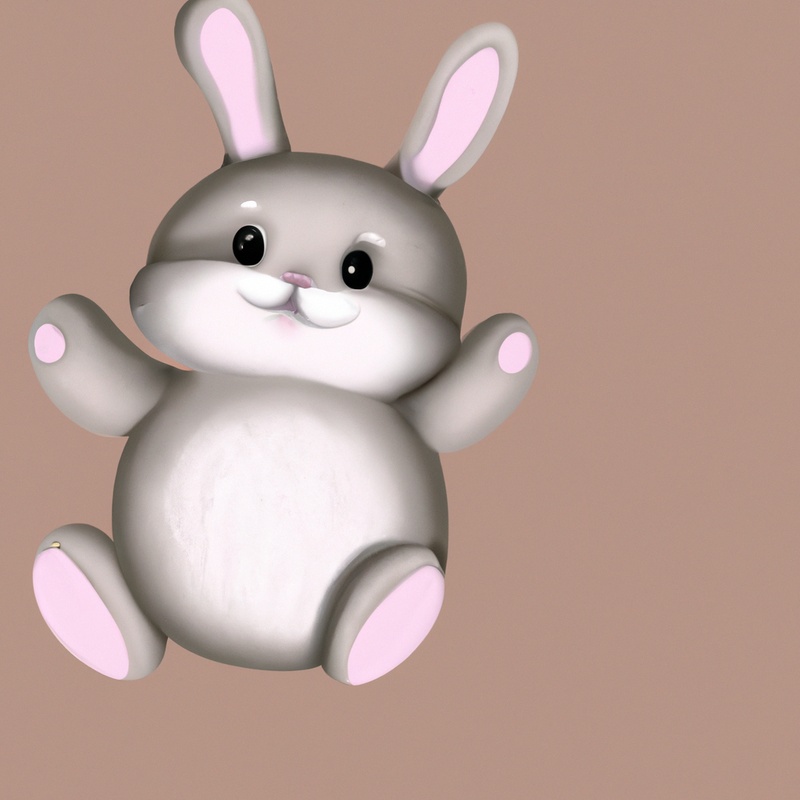
Setting up a comfortable sleeping area
Setting up a comfortable sleeping area for your pet rabbit is essential for their overall well-being. Here are some tips:
- Choose a cozy and safe spot: Select a quiet area of your home where your rabbit can relax and sleep without disturbance. Ensure the space is free from drafts, direct sunlight, and excessive noise.
- Provide a suitable bedding: Use soft bedding materials such as hay or straw to create a comfortable sleeping surface for your rabbit. Avoid using materials like cedar or pine shavings, as they can be harmful to their respiratory system.
- Consider a hideout or nest box: Rabbits love having their own private space. Provide a hideout or a nest box where they can retreat and feel secure. This can be a specially designed wooden box or even a cardboard hideout.
- Maintain cleanliness: Regularly clean and replace the bedding in your rabbit’s sleeping area to keep it fresh and hygienic. This will help prevent odor buildup and minimize the risk of health issues.
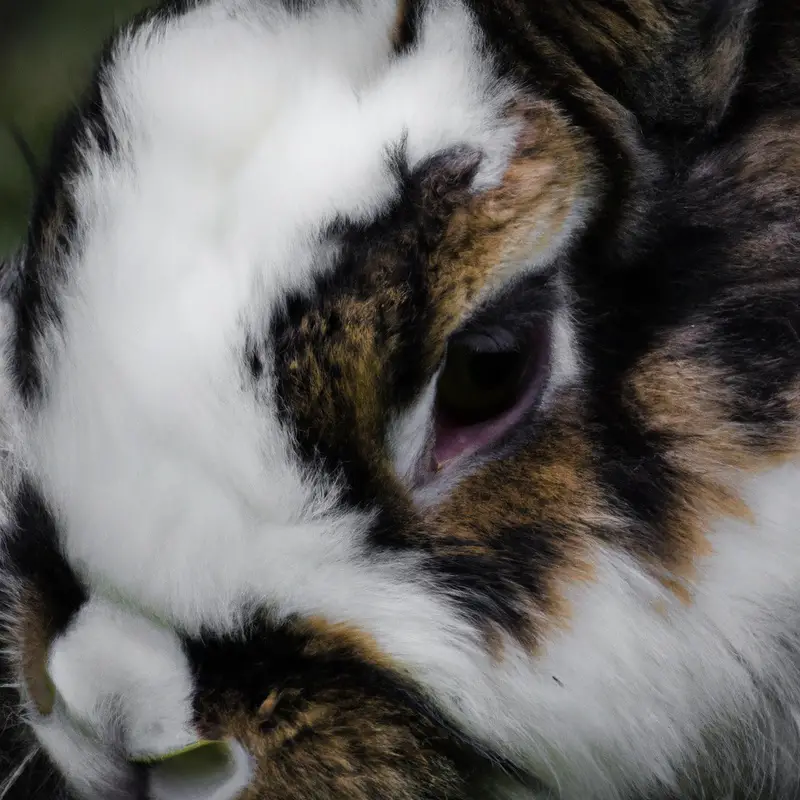
Nutrition and Feeding
A rabbit’s dietary requirements are essential for their health and well-being. Ensure a balanced diet with hay, fresh vegetables, and pellets.
Understanding a rabbit’s dietary requirements
Understanding a rabbit’s dietary requirements is essential for their health and well-being. Rabbits are herbivores and have a unique digestive system that requires a high-fiber diet.
They should have constant access to fresh hay, which is their main source of fiber.
In addition to hay, rabbits also need a variety of fresh vegetables and a small amount of pellets. However, it’s important to introduce new foods gradually and monitor their digestive health.
Avoid feeding rabbits foods that are high in sugar or carbohydrates, as these can lead to health problems.
Always consult with a veterinarian for specific dietary recommendations for your pet rabbit.
Providing a balanced diet with hay, fresh vegetables, and pellets
To provide a balanced diet for your pet rabbit, make sure to include three key components: hay, fresh vegetables, and pellets. Hay is an essential source of fiber and helps maintain healthy digestion.
Fresh vegetables like leafy greens provide important nutrients and variety.
Pellets should be specifically formulated for rabbits and given in moderation. Remember to offer water at all times and consult with your veterinarian for specific dietary recommendations for your pet.
Avoiding harmful foods and treats
It’s important to know what foods and treats to avoid giving to your pet rabbit.
Here are some items that can be harmful:
- High-sugar foods: Avoid feeding your rabbit sugary treats like candy or chocolate. Rabbits have a sensitive digestive system and excess sugar can cause digestive issues.
- Processed foods: Stay away from processed snacks or foods that are high in preservatives. Stick to fresh fruits and vegetables instead.
- Foods high in carbohydrates: Limit starchy foods like bread, pasta, and rice. While these may be fine in small amounts, too much can lead to weight gain.
- Toxic plants: Be mindful of the plants in and around your rabbit’s environment. Some common household plants like lilies, tulips, and daffodils can be toxic if ingested.
Remember, a healthy diet for your rabbit should consist mainly of hay, fresh veggies, and a small amount of pellets.
Always consult with a veterinarian for specific dietary guidelines and recommendations for your pet rabbit.
Exercise and Enrichment
Regular exercise is essential for your pet rabbit’s well-being. Additionally, providing mental stimulation with toys and tunnels is important for their enrichment.
Importance of exercise for rabbits
Exercise is essential for rabbits to maintain their overall health and well-being. Regular physical activity helps to prevent obesity, strengthens their muscles, improves digestion, and promotes mental stimulation.
Additionally, exercise allows rabbits to exhibit natural behaviors such as hopping, running, and exploring their surroundings.
It is important to provide a safe and spacious environment for your rabbit to exercise freely. Encourage your rabbit to stay active by providing toys, tunnels, and supervised outdoor time.
Regular exercise is crucial for your rabbit’s happiness and longevity.
Setting up a safe play area
Setting up a safe play area for your pet rabbit is essential to ensure their well-being.
Here are a few tips to help create a secure environment for your furry friend:
- Choose a designated space: Select an area in your home or yard where your rabbit can play freely without any potential hazards or access to electrical cords.
- Remove toxic plants and substances: Make sure to remove any plants or household items that could be harmful if ingested. Keep cleaning supplies and other chemicals stored safely away.
- Provide appropriate toys: Offer a variety of toys that are safe for rabbits, such as tunnels, wooden chew toys, and treat puzzles. These toys will keep them mentally stimulated and prevent them from exploring potentially dangerous areas.
- Supervise playtime: Always monitor your rabbit while they are in their play area. This way, you can intervene if they show any signs of distress or attempt to chew on something they shouldn’t.
- Ensure proper ventilation: Make sure the play area is well-ventilated to maintain a comfortable temperature for your rabbit. Avoid placing the play area near heat sources or direct sunlight that could cause overheating.
By setting up a safe play area, you can provide your pet rabbit with a secure and enriching space to explore and play to their heart’s content.
Providing mental stimulation with toys and tunnels
One way you can provide mental stimulation for your pet rabbit is by giving them toys and tunnels.
Rabbits love to explore and play, so providing them with tunnels to run through can keep them entertained.
You can also give them toys like balls or puzzle toys to keep their minds active.
Just be sure to choose toys that are safe for rabbits and avoid any small parts that could be a choking hazard.
Health and Hygiene
Regular vet check-ups and vaccines are important for your rabbit’s health.
Additionally, maintaining good dental hygiene and being aware of common health issues will help keep your pet in top shape.
Regular health check-ups and vaccinations
Regular health check-ups and vaccinations are essential for ensuring the well-being of your pet rabbit.
By scheduling regular visits to the veterinarian, you can monitor your rabbit’s health and detect any potential issues early on.
During these check-ups, the vet will examine your rabbit, provide necessary vaccinations, and address any concerns or questions you may have.
Vaccinations are important for preventing common diseases and ensuring your rabbit stays healthy.
Keeping up with regular health check-ups and vaccinations will help keep your pet rabbit in great shape and provide you with peace of mind.
Maintaining good dental hygiene
Maintaining good dental hygiene for your pet rabbit is essential for their overall health and well-being.
Regularly brush your rabbit’s teeth using a small, soft-bristled toothbrush and rabbit-safe toothpaste.
Provide plenty of hay and fibrous foods to naturally wear down their teeth and prevent overgrowth.
Avoid sugary treats and provide chew toys to encourage healthy chewing habits.
Regular check-ups with a veterinarian experienced in rabbit dentistry are also recommended.
Preventing and treating common health issues
Preventing and treating common health issues in pet rabbits is essential for their well-being.
Regular veterinary check-ups are important to catch any potential health problems early on.
Providing a balanced diet, consisting mainly of hay and fresh vegetables, can help prevent digestive issues.
Regular exercise and mental stimulation are crucial for maintaining overall health.
It’s also important to ensure a clean and hygienic living environment to prevent common ailments like ear infections and respiratory issues.
If you notice any signs of illness, such as loss of appetite or changes in behavior, it’s crucial to seek veterinary attention promptly.
Socialization and Companionship
Understanding the social nature of rabbits is important for their socialization and companionship needs. Introducing your rabbit to other pets can be a positive experience with careful supervision and slow introductions.
Understanding the social nature of rabbits
Rabbits are social animals, meaning they thrive on companionship and interaction.
They enjoy the company of other rabbits and even other small pets like guinea pigs.
It’s crucial to provide them with opportunities for socialization to ensure their overall well-being.
If you have a single rabbit, consider getting another one to keep them company.
Remember, a happy bunny is a social bunny!
Introducing your rabbit to other pets
Introducing your rabbit to other pets can be a gradual process to ensure their safety and well-being. Start by allowing them to see and smell each other through a gate or closed door.
Then, gradually introduce them in a neutral and controlled environment.
Always supervise their interactions and be prepared to intervene if necessary. Remember, each pet is unique, so take your time and let them set the pace.
Patience and positive reinforcement will help create a harmonious relationship between your rabbit and other pets.
Considering a companion for your rabbit
Considering a companion for your rabbit can be beneficial for their mental and emotional well-being.
Rabbits are social animals and thrive in the company of other rabbits.
Having a companion can provide them with opportunities for playful interactions, grooming, and communication in their own unique rabbit language.
It is important to introduce rabbits gradually and provide enough space for each rabbit to establish their own territory.
Before introducing a companion, ensure both rabbits are neutered or spayed to prevent aggression and unwanted breeding.
Always monitor their interactions and consult with a veterinarian if you have any concerns.
Grooming and Cleanliness
Regular grooming helps prevent matting and shedding in your pet rabbit. Keeping the living space and litter box clean is essential for your rabbit’s health and hygiene.
Regular grooming to prevent matting and shedding
Regular grooming is essential for preventing matting and shedding in your pet rabbit.
Here are some tips to keep in mind:
- Brushing: Regularly brush your rabbit’s fur to remove loose hairs and prevent matting. Use a soft brush or comb designed for small animals and be gentle to avoid hurting your rabbit.
- Bathing: Rabbits generally do not require frequent baths, as they are clean animals. However, if your rabbit gets dirty or becomes soiled, you can use a mild pet-friendly shampoo to give them a gentle bath. Be sure to dry them thoroughly afterward to prevent matting.
- Nail Trimming: Trim your rabbit’s nails regularly to prevent them from becoming overgrown and causing discomfort. Use a small animal nail clipper and be careful not to cut the quick, which is the blood vessel inside the nail.
- Ear Cleaning: Check your rabbit’s ears regularly for any dirt or wax buildup. Use a small, damp cloth or cotton ball to gently clean the outer part of the ear. Avoid inserting anything into the ear canal.
By incorporating these grooming practices into your routine, you can help keep your rabbit’s fur clean, free of tangles, and minimize shedding.
This will contribute to your pet’s overall health and well-being.
Cleaning the living space and litter box
Cleaning the living space and litter box is essential for maintaining a safe and healthy environment for your pet rabbit.
Regularly remove any soiled bedding, hay, or droppings from the living area to prevent odor and bacterial buildup.
Use a pet-safe disinfectant to clean the enclosure, ensuring all surfaces are thoroughly cleaned and rinsed.
Additionally, scoop out the litter box daily, replacing soiled litter with fresh material.
Providing a clean living space and litter box will help prevent illness and promote your rabbit’s overall well-being.
Preventing and treating common grooming problems
To prevent and treat common grooming problems in your pet rabbit, regular brushing is essential to prevent matting and hairballs.
Use a soft brush or comb specifically designed for rabbits.
Trim your rabbit’s nails regularly to prevent them from becoming too long and causing discomfort or injury.
If your rabbit develops matted fur, gently remove the mats with your fingers or a comb, taking care not to pull on the fur.
Cleaning your rabbit’s ears on a regular basis and keeping their environment clean will also help prevent common grooming issues.
Safety Precautions
Ensure the safety of your pet rabbit by identifying and addressing potential household hazards.
Be mindful of temperature and humidity levels to maintain a comfortable environment for your furry friend.
Identifying potential household hazards
Identifying potential household hazards is essential for creating a safe environment for your pet rabbit.
Some common hazards to be aware of include:
- Electrical cords: Rabbits are curious animals and may chew on electrical cords, leading to electrical shock or injury. Keep cords out of reach or use cord covers to prevent chewing.
- Toxic plants: Certain houseplants and outdoor plants can be poisonous to rabbits if ingested. Research plants in and around your home to ensure they are rabbit-safe.
- Cleaning products: Many household cleaning products contain chemicals that can be harmful to rabbits. Store these products securely and keep rabbits away from areas where cleaning is being done.
- Small objects: Rabbits love to explore, and small objects like buttons, coins, or jewelry can pose a choking hazard. Be sure to keep these items safely stored.
- Open windows and doors: Rabbits are agile creatures and can easily escape through open windows or doors. Make sure all openings are securely screened or closed to prevent accidents.
Regularly inspect your home for potential hazards and take necessary precautions to keep your pet rabbit safe.
Managing temperature and humidity levels
To ensure a safe and comfortable environment for your pet rabbit, it is important to manage temperature and humidity levels. Rabbits are sensitive to heat and can easily overheat, so keep their living area cool and well-ventilated.
Conversely, they are also sensitive to cold temperatures, so provide them with warm bedding and shelter during colder months.
Additionally, maintaining proper humidity levels is important for their respiratory health. Keep the humidity levels between 30% and 50% to prevent any respiratory issues.
Understanding the signs of stress in rabbits
Understanding the signs of stress in rabbits is essential for their well-being.
Some common signs include teeth grinding, hiding, reduced appetite, and excessive grooming.
Other signs to look out for are excessive thumping, aggressive behavior, and changes in litter box habits.
If you notice any of these signs, it’s important to identify and address the cause of stress promptly.
Providing a calm and secure environment, maintaining a consistent routine, and providing plenty of mental and physical stimulation can help minimize stress in your furry friend.
Frequently Asked Questions
What is the best enclosure size for a pet rabbit?
The best enclosure size for a pet rabbit is one that allows them to move around comfortably. A minimum of 4-6 square feet of space is recommended for small to medium-sized rabbits, while larger breeds may require up to 12 square feet.
It’s important to consider the height as well, with at least 2 feet of clearance so your rabbit can stand up on their hind legs.
Providing tunnels, toys, and hiding spaces within the enclosure will also help keep your rabbit entertained and stimulated.
How often should I feed my rabbit?
You should feed your rabbit a consistent diet of hay, fresh vegetables, and high-quality rabbit pellets.
Adult rabbits should be fed about 1/4 to 1/2 cup of pellets per day, and unlimited hay.
Vegetables should be introduced gradually and given in small amounts.
Fresh water should always be available for your rabbit.
It’s important to monitor their weight and adjust their feeding routine accordingly.
Consulting with a veterinarian can provide specific recommendations based on your rabbit’s age, weight, and overall health.
Can I let my rabbit roam freely in the house?
Yes, you can let your rabbit roam freely in the house, but it is important to take certain precautions. Ensure that your home environment is safe, free from harmful substances, and secure to prevent your rabbit from escaping or getting injured.
Remove any toxic plants, electrical wires, and small objects that your rabbit could chew on.
Provide appropriate hiding places, toys, and litter boxes to make the environment enriching and stimulating. Supervise your rabbit initially to ensure they are adjusting well and not causing any damage.
What should I do if my rabbit stops eating?
If your rabbit stops eating, it’s important to take action quickly. Check for any obvious signs of illness or discomfort, such as runny eyes or nose, lethargy, or changes in behavior.
If you notice anything concerning, contact a veterinarian immediately.
In the meantime, ensure your rabbit has access to fresh water and hay at all times. Offer a variety of fresh greens to entice them to eat.
If they still refuse, it’s crucial to seek professional guidance to address the underlying issue.
Is it necessary to spay or neuter my rabbit?
Yes, it is necessary to spay or neuter your rabbit. Spaying (for females) and neutering (for males) are important procedures that can benefit your rabbit’s health and behavior.
It helps prevent reproductive cancers and eliminates the risk of pregnancy or uterine infections in females.
Neutering can reduce aggressive behavior, prevent territorial marking, and decrease the risk of testicular cancer in males. Consult your veterinarian for more information and to schedule the procedure for your rabbit.
Can rabbits be litter trained?
Sure thing, happy to help! Can rabbits be litter trained? Yes, rabbits can be litter trained just like cats! They are naturally clean animals and can easily learn to use a litter box.
All you need is a suitable litter box and some patience.
Place the litter box in a corner of the rabbit’s enclosure, and add a litter that is safe for rabbits, such as paper-based or wood pellet litter. Encourage your rabbit to use the litter box by placing some of their droppings inside.
Be consistent with the placement and type of litter, and reward your rabbit with praise and treats when they use the litter box correctly.
Final Verdict
Creating a safe and enriching environment for your pet rabbit is crucial for their overall health and happiness. By providing the right size and type of enclosure, rabbit-proofing your home, and setting up a comfortable sleeping area, you can ensure their physical well-being.
Understanding their dietary requirements and providing a balanced diet, along with regular exercise and mental stimulation, is essential for their mental and physical health.
Regular grooming, maintaining cleanliness, and taking safety precautions will also contribute to their well-being. Finally, understanding their social nature and providing companionship is vital for their emotional well-being.
By following these guidelines, you can create a safe and enriching environment that will promote the health and happiness of your beloved pet rabbit.


